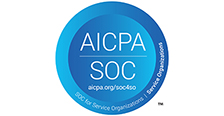
-
January 1, 1900
Rising to the Challenge
by Henry A. Hill
With each passing year, more and more builders are finding that they must stand up for the rights they have gained through the Legislature and the courts. At Hill Wallack, we continue to be amazed at the number of municipalities that seek to enforce illegal land use ordinances or subject builders to illegal conditions of approval. One can debate whether this is because the local board attorneys are incompetent, or whether they have merely abdicated their role as interpreters of the law as a result of local pressures. In the past, boards and their attorneys could be fairly confident that illegal ordinances and conditions of approval would not be challenged by the affected developer. But as the illegal demands become more and more intolerable, this is changing.
While the challenge faced by builders is not confined to the municipal level, that is where the abuses are most glaringly apparent. For example, the Municipal Land Use Law (MLUL) requires a planning board to approve a development application that complies with local ordinances. The MLUL also limits the nature and scope of the ordinances that can be enacted, and numerous ordinances have been struck down because they were not enabled by the statute. Similarly, conditions cannot be placed on approvals unless they are authorized by ordinances that contain clear, objective standards, which, in turn, must be enabled by the MLUL. Illegal ordinances and conditions of approval are becoming more and more commonplace. Here is a representative sample:
- Ordinances containing vague requirements, such as conditioning an approval on a design element being acceptable to the municipal engineer, landscape architect or planner, or referring to some standard such as "harmony with the land;"
- Ordinances seeking to regulate the form of ownership of structures or ownership, typically prohibiting rentals;
- Ordinances requiring community impact statements for residential developments;
- Ordinances directed at an aesthetic aspect of the development, including "anti-look- alike" ordinances;
- Ordinances employing definitions other than those used in the MLUL to regulate permissible density and other aspects of the project;
- Ordinances requiring the actual completion of all improvements prior to final approval;
- Most TID (Transportation Improvement District) ordinances;
- Ordinances often prohibiting an application to the planning board before approvals are obtained from some other agency;
- Ordinances requiring applicants to detail the political contributions of their owners and consultants;
- Ordinances purporting to regulate areas preempted by some other branch of government, such as those providing for local review of LOI's (letters of interpretation), DEP-approved buffer averaging plans, public offering statements or soil testing.
This list could go on and on. The nature of illegal ordinances and conditions of approval is limited only by the imagination of municipalities seeking to thwart development within their borders. And the difficulties are by no means limited to the local level. In this special issue of our Quarterly, which is designed especially for attendees of the Atlantic Builders Convention, the Hill Wallack Land Use Division attorneys update you on the latest legal developments governing the real estate development industries. We pride ourselves on delivering state-of-the-art legal services to our clients, who are continually rising to the challenge offered by New Jersey's regulatory climate. We stand shoulder-to-shoulder with our clients as we establish the legal precedents that enable all New Jersey builders to provide housing for our state's families.
We hope you find this issue to be both useful and enjoyable.
Henry A. Hill is a senior partner of Hill Wallack. He is head of the firm's Land Use Division and partner-in charge of the Division's Land Use Litigation Practice Group. A recognized national expert in the field of land use law, he is a past-Chair of the New Jersey State Bar Association's Land Use Section.


